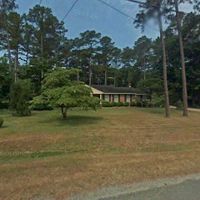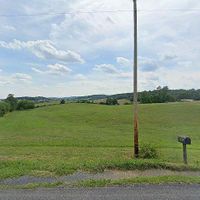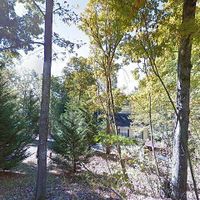Virginia Rent to Own Homes
From the 544 miles of wilderness along the Appalachian Trails in Virginia to its 7,213 miles of shoreline, nature and spectacular views are everywhere in Virginia. The state has 15.72 million acres of forestland, which covers 62% of its land area. In 2019, Forbes ranked Virginia the number one state in quality of life. This prestigious tribute suits such a well-rounded, beautiful state. Virginia rent-to-own homes and Virginia home rentals are plentiful and do not come at a heavy price, so if you're thinking of moving, this great state should be high on your list as an option for your next destination.
Locations Near VA
Average Cost of Living in Virginia
Virginia has a fairly affordable cost of living that's 3.7% higher than the U.S. average due to its slightly costly housing and health expenses. Charlottesville's living costs are 0.8% higher than the state average, but it's not hard to find more affordable cities in Virginia. Norfolk is nearly 12% lower than the state average and 8.2% lower than the national average, and Hampton is 15.3% lower than Virginia and 11.6% lower than the U.S.
Average Home Prices in Virginia
The state's real estate market is higher than the national average, but not by much. Virginia's median home price is $258,400, compared to $231,200 for the rest of the country's average. Houses in Charlottesville are a bit more expensive at $289,500, while Norfolk and Hampton are more affordable at $185,900 and $167,500. As you go about your search for a new house, you'll find many inexpensive rent-to-own homes in Virginia in both its popular and quieter cities and towns.
Virginia Climate and Demographics
Virginia gets 44 inches of rain per year - six more than the national average of 38 - and 14 inches of snow, which is half the U.S. average of 28. Average low temperatures in January are 25°F, and average highs in July are 87°F.
Virginia's population is pretty diverse - 63.1% are white, 19.2% are black, 8.3% are Hispanic, 6.1% Asian, and 2.8% mixed. The state also has its fair share of immigrants - 86.3% of its citizens were born in the U.S.
Women comprise 50.8% of the state's population. The following is a breakdown of Virginians by age:
- 65 and older = 13.8%
- 40-64 = 33.2%
- 22-39 = 24.5%
- 18-21 = 5.76%
- 0-17 = 22.4%
Largest Virginia Employers
Virginia Commonwealth University College is the number one employer in the state with 52,000 employees. The College of William and Mary employs 30,000, and Huntington Ingles-Newport, Heart and Vascular Institute, Huntington Ingalls Industries, and Nestle USA, Inc. have between 20,000 and 24,000 employees.
Popular Cities in Virginia
Hampton has hundreds of years of European history. In 1610, English citizens moved into what was then called the village of Kecoughtan. The development's name changed to Hampton in the late 1600s, and though it was organized as a town in 1705, the municipality only incorporated officially as a town in 1849 and as a city in 1908. Its continued settlement makes it the oldest community in the U.S. to be continuously inhabited by people of British origin.
Charlottesville is a small city with 47,266 residents living within its 10.24 square miles. The prestigious University of Virginia is located in Charlottesville. It has 17,011 students enrolled on its 1,682-acre suburban campus, bringing additional vibrancy to the city. Forbes ranked its metro area number 12 in Best Small Places for Business and Careers, and 7th in education. The city has a host of desirable neighborhoods, including Belmont, which has buildings dating back to the early 1900s, and the historic, brick-lined downtown.
Norfolk is the third-most populous municipality in Virginia. It encompasses 54.12 square miles and has a population of 242,742. The city has received its share of accolades over the years too. It was number one on Travel and Leisure's 2017 list of America's favorite cities. In 2018, Newsweek rated the Virginia Beach/Norfolk area as the 45th best place to find a job in the U.S. And the city was 55th on Livability.com's list of top 100 places to live for 2019. Norfolk has every type of attraction and amenity you'd expect from a city of its size, including community-minded festivals that bring its citizens together throughout the year.
Popular State Attractions in Virginia
Watch songbirds, raptors, and butterflies swarm the skies as they migrate south for the winter at the 1,127-acre Eastern Shore of Virginia National Wildlife Refuge. Take the 0.5-mile butterfly trail, the 0.5-mile wildlife trail, or the 5-mile bike and hike trail to see lots of plant life and migratory birds or simply to enjoy nature.
Explore Assateague Island off the coast of Virginia by land, car, or boat. Collect seashells or make a campfire on the beach, go birdwatching with friends and family, or get active by going fishing, hunting, hiking, biking, kayaking, or horseback riding at the island's Chincoteague National Wildlife Refuge. Wild Chincoteague horses roam the island, interpretation signs along the trails teach about the plant and wildlife, and guided tours educate visitors about the natural habitat.
Virginia was heavily involved in the Civil War. You can relive Lee vs. Grant and many other of the war's battles at the Civil War Trails. If you prefer to spend more time indoors, visit museums such as the White House of the Confederacy or the Virginia Military Institute's Museum of the Civil War. You can also find war reenactments and monuments throughout the state.








